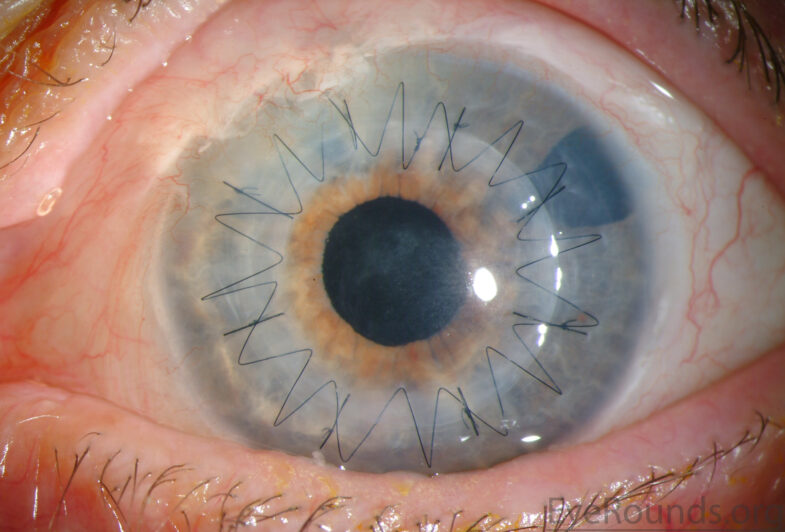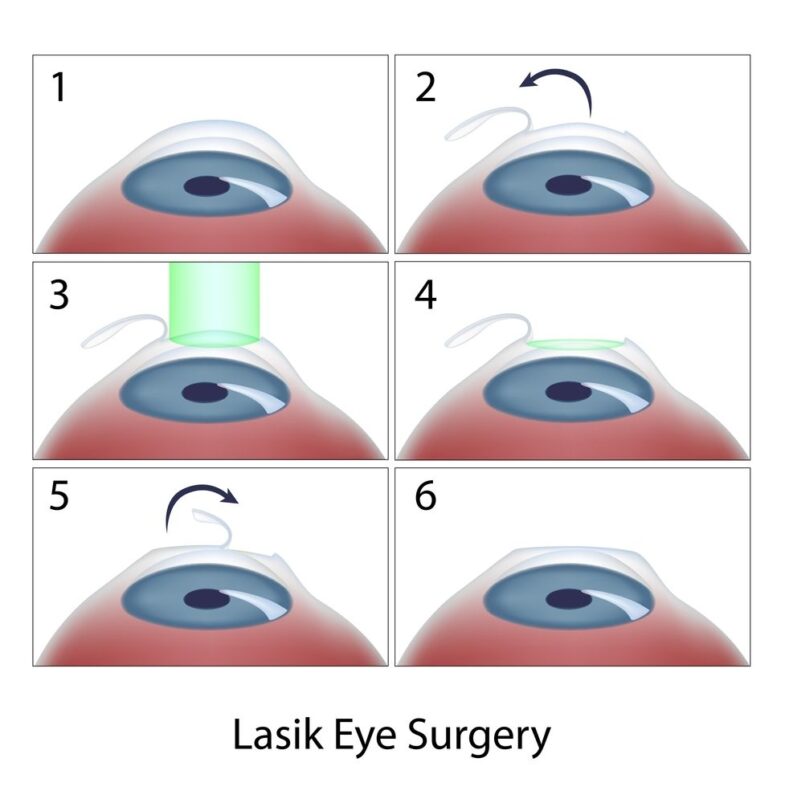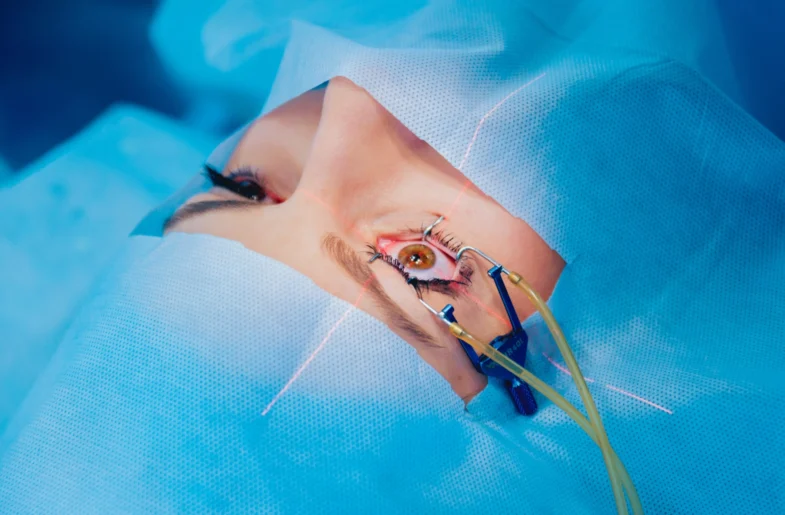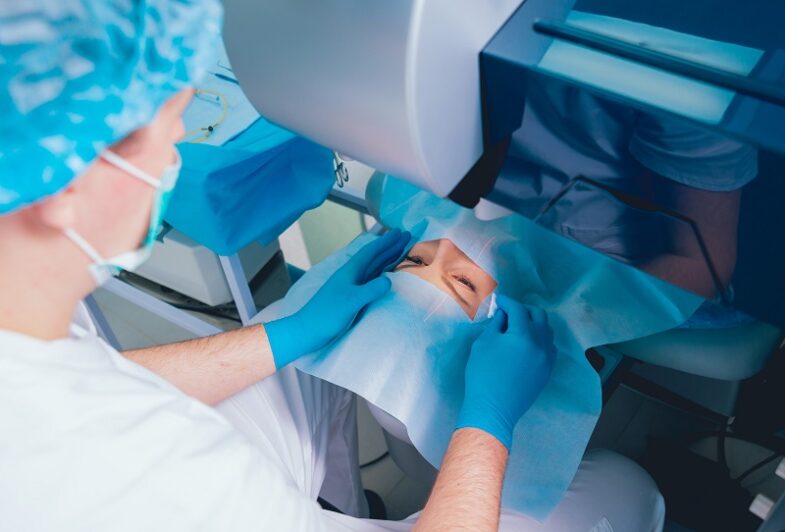Opening Word
Taking care of our health is the most important thing in the world because without it we cannot hope to succeed in life and be happy. Prevention is always better than treatment especially with things that are easily avoidable through lifestyle changes and some good diligence. People usually tend to regret not taking care of themselves once problems and symptoms start to show, by which point it can be too late for certain things to completely heal. One thing that we are taught to take care of from the earliest days is our vision. Parents and teachers as well as other educators and role models have been mentioning the importance of keeping our health from the earliest days. Brush your teeth, take showers, do not bite your nails, and do not sit close to the TV. This last one deals with eyesight, the most important of our senses, and we are instructed how best to preserve it from the earliest years of our childhood.

Source: healthscopemag.com
When a Procedure is Needed
Sometimes, however, it is not possible to influence everything. While prevention through good habits is possible for a lot of different things, it is not always viable. Sometimes there are diseases, illnesses, and injuries that we cannot know about or prepare for. We can only deal with them once they start appearing. It is of course important to react quickly but that may also not be enough in some cases. There is a lot that can go wrong with vision that does not deal with nearsightedness or farsightedness. For example, one of the most common problems that require careful and thorough treatment is cornea removal. Corneal transplants are operations that involve removing a part of or the entire cornea that has been damaged and replacing it with tissue from a donor. It is also called keratoplasty and it is the final solution that is offered. It improves sight, relieves pain, and treats severe damage and infection.
A Lighter Solution

Source: webeye.ophth.uiowa.ed
For problems that are not as serious however where transplantation is not the only option, there is photorefractive keratectomy (PRK), the excision of a piece of cornea. This operation changes the refraction of the cornea and it is performed with lasers. Laser eye surgeries have been the norm for years now and photorefractive keratectomy procedures are used to correct vision and reduce the need for lenses and/or glasses. A lot of patients are worried because lasers and eyes do not mesh together in their heads. Laser shooting up m eyeball? Forget it! However, it is a routine procedure that is incredibly safe with a near perfect success rate. But can it actually remove the cornea? Well, to find that out you need to keep reading this article. For additional info on Photo-refractive Keratectomy, view more here.
What Is It?

Source: thenewyorkeyedoctor.com
So what is PRK exactly and what does it do? Well, as mentioned, it is a laser eye treatment that deals with issues causing the eyes to not bend the light properly. The laser changes the shape on the surface of the cornea which in turn shapes the way rays of light are focused on the retina. All in all, PRK improves how your eyes deal with light with is crucial for proper vision and no problems with sight. There are many issues that can cause the need for a photorefractive keratectomy. Some of the most common ones include myopia, another term for nearsightedness, and hyperopia which is farsightedness. In addition to these, PRK also treats astigmatism where the shape of the eyes causes blurry vision that is most pronounced with bright lights when it is dark.
Who Can Do It?

Source: medodamerica.com
There are some requirements the patients must meet before they can get a PRK treatment. Apart from talking to your ophthalmologist (the eye doctor) and getting their opinion there is actually a whole list of things you must be. Firstly, the corneas need to be healthy. Actually, your entire eyes need to be healthy. Only patients 18 and older can undergo the operation. Your eye prescription needs to have remained the same for an entire year before you can be a candidate for this operation. If your sight is still getting worse, you have to wait for it to settle before getting treatment. Patients with glaucoma, cataracts, eye infections, dry eyes, blepharitis, scars in eyes, refractive errors, cornea injuries, diabetes, and healing problems are typically turned down. If you are pregnant or breastfeeding, you are also not likely to qualify.
What Happens During the Operation?

Source: eyemichigan.com
It always helps to know exactly what happens during an operation well before you are “on the table”, or in the chair in this case. First off, your eyes are numbed with special anesthetic eye drops. A holder is inserted that prevents you from blinking and do not worry, your eyes will not suffer without blinking. The outer layer of your cornea that is called the epithelium is removed during the procedure, using the laser. In some cases, a brush, a blade, or an alcohol solution is used. Once this is done, the eye doctor uses the laser to reshape the cornea so that your issue goes away. All of this lasts only a few minutes. The doctor than gives you anti-inflammatory drops, antibiotic drops, and steroid drops. There is a clear, protective lens put over the eye to prevent irritation and to allow the eye to heal for a few days, after which it is taken off. And that is it! The entire experience lasts about 15 minutes. You are awake and you can go home immediately after. Make sure to rest after it, avoid physical activities and take it easy for a few days. You will be more sensitive to light so wear sunglasses
Cornea is Not Removed
As you can see, the cornea is not removed during a photorefractive keratectomy operation. It is not the same type of surgery as the more invasive cornea transplant. For that, you will need a keratoplasty. A PRK merely removes the thin epithelial layer that exposes the treatment area so that it can be smoothened. This layer grows back later as the cornea heals post-surgery. It is still there so no, it is not removed. This is a routine procedure than thousands of people go through every year. While it may sound or look scary, it is anything but and it works wonders!



